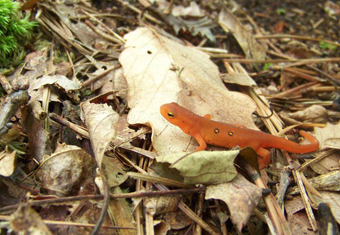

Abstract
Amphibians have been experiencing unprecedented population declines and extinctions around the globe. While there are multiple causes, emerging infectious disease is a main driver. The newly identified Salamander-eating fungus, Batrachochytrium salamandrivorans (Bsal) poses an immense threat to global salamander diversity. In Europe, fire salamander populations have already experienced drastic population declines as a result of this fungus. From red-spotted newts to one of the largest and most ancient species, the hellbenders, North America is a hotspot of salamander diversity rivaled by no other around the world. Consequently, understanding and managing disease threats like that posed by Bsal, are of the utmost importance for conservation.
Currently, we have the rare opportunity to be proactive in assessing disease risk and developing effective conservation strategies to reduce Bsal-associated declines before this fungus wreaks havoc on North American salamanders. Therefore, as a Smith Fellow I propose (1) to develop a “landscape of risk” focused on wild populations of the Bsal susceptible species, the eastern newt, and other co-occurring salamanders across the Eastern US by assessing and characterizing correlates of disease risk, including host mucosome function and environmental factors, and (2) to test the efficacy of multiple disease mitigation tactics, including nasal vaccination, probiotic bioaugmentation of the skin, and environmental micropredator augmentation. I will test these strategies individually and in combination to determine the most effective and feasible mitigation approach for conserving salamanders. With this research I will gain a thorough understanding of Bsal-associated risk, and will develop proactive conservation strategies, which can also inform wildlife disease management as a whole.
